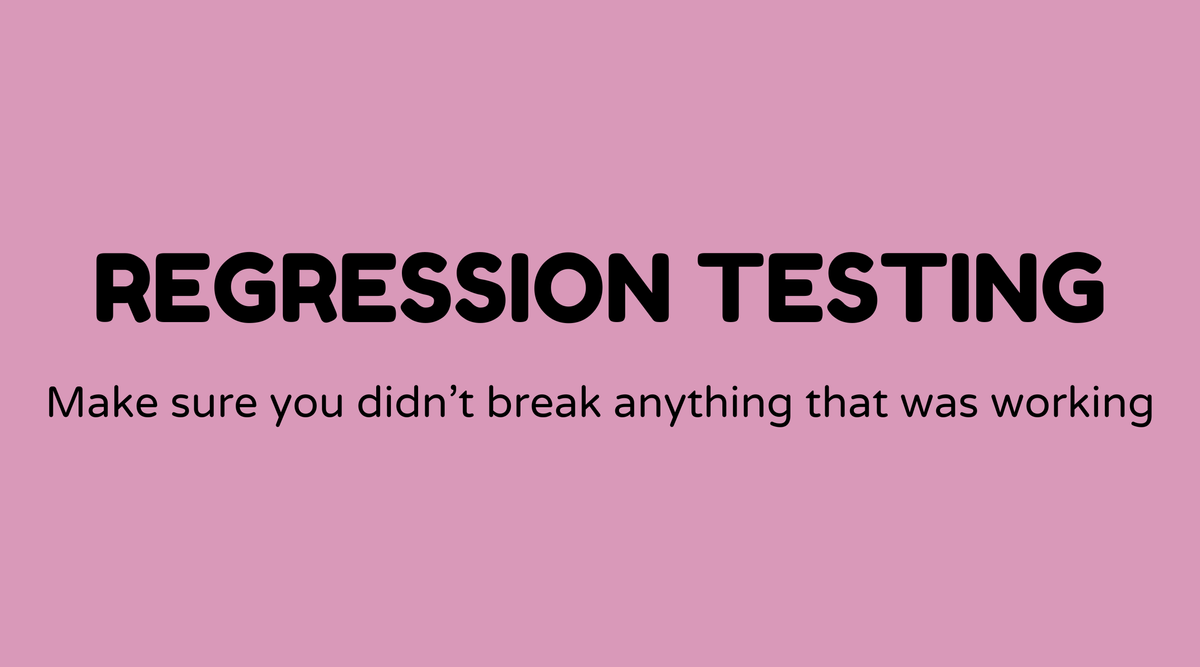Regression testing

Overview of Regression Testing:
Regression testing serves as a final check before launching a new feature or update in the software development process. You may have encountered this situation: you implement a new change in an application, and suddenly, something else stops functioning correctly. That’s where regression testing plays its role, ensuring modifications don’t disrupt existing functionality. This routine practice involves testing the unchanged parts of the software following updates to confirm everything operates smoothly.
Why Regression Testing Matters:
Picture spending countless hours developing a feature, only to find out it caused a bug in a previous function. That scenario is averted by regression testing. Its importance lies in maintaining the quality and dependability of software. It guarantees that new implementations don’t damage existing features. In the end, it conserves time and resources by identifying issues early, thus preventing expensive problems after release. Additionally, it instills confidence among stakeholders—knowing everything functions as intended keeps everyone satisfied.
What is Regression Testing:
Regression testing entails re-running both functional and non-functional tests to ensure that previously developed and verified software continues to perform well after a change. It is a kind of software testing that checks that a recent program or code alteration has not negatively impacted existing features. Think of it as a quality check that confirms new code changes don’t disrupt the stable components of your application.
How to Conduct Regression Testing:
To carry out regression testing effectively, consider the following steps:
- Select Test Cases: Choose a suitable assortment of test cases, including existing and new ones, that validate the stability of current features.
- Automate Testing: Where feasible, implement automation for efficiency. Tools such as Selenium, QTP, and JUnit can greatly enhance the process.
- Prioritize Tests: Rank test cases based on critical features and previous defects.
- Consistent Testing: Integrate regular regression testing into your CI/CD pipeline.
- Documentation: Maintain detailed records of test outcomes for ongoing refinement.
Examples of Regression Testing:
-
UI Overhaul – If an application undergoes a design change, regression testing ensures that these alterations do not impact the functionality of buttons or links.
-
Code Cleanup – When code is reorganized, regression testing verifies these improvements did not modify software functionality.
-
Security Updates – If there’s an update to address vulnerabilities, regression testing is vital to ensure this fix does not interfere with current features.
Sample Agenda for a Regression Testing Workshop:
-
Introduction to Regression Testing: Grasping the fundamentals, advantages, and significance.
-
Selecting Test Cases: Tips for deciding which tests to execute.
-
Automated Testing Tools: An in-depth look at popular tools like Selenium or JUnit.
-
Practical Session: Participants create a small regression test suite.
-
Best Practices: Sharing proven strategies for effective regression testing.
FAQs
What’s the difference between regression testing and retesting?
Retesting concentrates on new code and verifies its functionalities, while regression testing ensures that recent modifications haven’t disrupted anything existing.
How often should regression testing be conducted?
Every time a substantial code alteration occurs, regression testing should be performed to ensure stability.
Is regression testing only done through automation?
Not necessarily! While automation is advantageous, manual regression testing is frequently conducted, especially for critical functionalities.
Which tools are most effective for regression testing?
Common tools include Selenium, JUnit, QuickTest Professional (QTP), and TestComplete.
How can regression testing help in identifying software bugs?
By confirming that unchanged areas operate as they did before, regression testing helps to find and resolve bugs prior to release.
Can regression testing be skipped?
While it’s an option, it’s not advisable, as skipping could lead to undetected bugs affecting existing functionalities.



